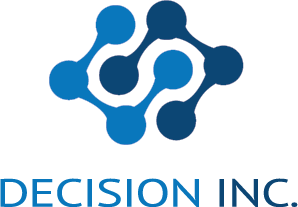BLOG | GENERATIVE AI
The Complete Beginner’s Guide to Generative AI
Generative artificial intelligence (AI) represents one of the most promising and rapidly accelerating fields in the world of technology today. Systems like DALL-E 2, GPT-3, and Stable Diffusion demonstrate the remarkable ability of AI algorithms to create original text, images, music, code and more simply based on text prompts provided to them.
As these technologies continue to swiftly mature in performance, they stand to fundamentally transform how everyday people interact with computers, how artists and creators pursue their craft, and even how subsequent AI systems are built. However, appropriate governance and oversight mechanisms have not yet caught up to the rapid pace of technical development in this domain.
This beginner’s guide to generative AI aims to provide an accessible yet comprehensive overview of the current state of generative AI tailored for a non-technical audience.
We define what exactly generative AI refers to, summarize some of its leading contemporary applications, offer insight into how these powerful systems actually work, discuss salient limitations and problems observed in today’s models, and speculate regarding the future societal impacts of this emerging field of research.

What is Generative AI?
Generative AI refers to machine learning systems that can create new, original content on their own. Unlike more narrowly focused AI applications, generative models are not trained to perform a single predefined task. Instead, they leverage their understanding of a diverse dataset – everything from books to images to natural language – to output unique examples of content that belong to the distribution of that training data.
When fed a text prompt, they can supply a relevant image, continue an essay, generate code, or produce any range of outputs limited only by the breadth of their training data. Unlike traditional programs with rigid rules and limitations, generative models demonstrate remarkable flexibility, novelty and imagination in what they can produce.
Basic Generative AI Capabilities
Text – Models like GPT-3 display strong natural language generation abilities, allowing them to fluently write essays, articles, jokes or poetry based on text prompts. Diffusion models can also generate synthetic photographic images and digital art from text descriptions.
Images – Systems like DALL-E 2 and Stable Diffusion create realistic and creative images to match text prompt inputs. The variety and quality of images produced continues to improve.
Code – GitHub Copilot demonstrates the ability of generative models to autocomplete code based on comments and provide entire function definitions automatically aligned to descriptions.
Audio – Early examples of AI-generated music, text-to-speech, and voice cloning showcase promise, though current systems lag behind text and image generation capabilities.
What’s Behind the Sudden Hype About Generative AI?
While research into generative models has been ongoing for years, a few key factors have recently brought these systems into the public spotlight:
Rapid improvement – The capabilities of leading systems like DALL-E and GPT-3 first unveiled in 2021 stunned industry experts with their ability, signalling the coming of age of generative AI. Frequent updates have since brought exponential gains.
Viral media – Amusing and imaginative images and texts created by these systems spread rapidly online, capturing public imagination even among non-technical audiences. Suddenly generative AI’s possibilities seemed accessible.
Startup activity – Investors eagerly funded dozens of generative AI startups through 2021 and 2022, with companies like Anthropic, Stability AI, and Runway ML all focusing specially on this space and releasing their own models.
Big tech interest – Tech giants like Google, Microsoft, Meta and Baidu have now all declared generative AI research areas of strategic interest, signalling aspirations around what could become a new platform paradigm in coming years.
While recent advancements built on decades of research, 2022 represented a coming out party of sorts for generative AI following the alignment of rapid technical improvement, availability of application interfaces, targeted startup activity and enthusiastic social sharing that collectively triggered massively outsized expectations regarding its promise.
What are the Benefits of Generative AI?
As generative models continue to rapidly advance in capabilities, they have the potential to transform many industries and workflows through a variety of benefits:
Augmenting creativity – By collaborating with humans, AI could massively amplify creative output across industries.
Increasing accessibility – Generative applications can democratise content creation by eliminating specialised skill requirements.
Enhancing productivity – Auto-generating images, text and code can accelerate enterprise workflows and tasks enormously.
Inspiring learning – Interacting with models can inspire meta-learning around information and reasoning.
Mitigating bias – Proper governance introduces opportunities to enhance equity and diversity issues compared to human sectors.
With responsible development prioritising ethics and governance, generative AI unlocks immense creative, productivity and accessibility gains this decade. But achieving these goals requires urgent coordination industry-wide around model and data development.
What are the Risks of Generative AI?
Despite its promise, the rapid emergence of advanced generative AI also introduces an array of potential risks if development proceeds without appropriate safeguards:
Toxic outputs – Mistakes can lead models to generate biased or dangerous content absent detection systems.
Identity theft – High-fidelity synthetic media could enable fraud and scams impersonating real individuals without consent.
Misinformation – Fake generated text/media can spread false narratives and manipulate opinions.
Inequality – Unequal access to applications could further concentrate power and disparities globally.
Economic disruption – Automating creative roles long-term may impact professions even while boosting productivity.
Without focusing governance efforts directly on mitigating these risks proactively, the full promise of generative AI could become severely compromised from misuse and malicious activity enabled by unchecked development pace. Establishing guardrails now is essential while nurturing innovation.
How Will Generative AI Contribute to Business Value?
Generative models offer a diverse range of value-creation opportunities for enterprises across sectors which will only grow going forward:
Streamlining content production – Automatic generation of blog posts, social media assets, rich product listings with images and more can drastically reduce costs for marketing, ecommerce and customer engagement workflows.
Accelerating software development – Features like auto code completion cuts development and debugging time significantly by allowing devs to focus on higher-order logic through AI-assisted rapid prototyping.
Enhancing analytics – Generative applications like data synthesis, improved forecasting through simulation models and query answering all have the potential to amplify business intelligence capabilities tailored to vertical needs.
Creating on-demand expertise – Enterprises can leverage generative tutoring for cost-efficient reskilling programs at scale along with tools like chatbots providing specialised advice through vast knowledge resources instantly accessible.
Fostering innovation – Democratised access to creation tools backed by AI opens the doors for employees across disciplines to effectively ideate new services, experiences and go-to-market strategies powered by next-gen collaboration.
With thoughtful integration targeted at augmenting human productivity and creativity rather than indiscriminate automation, generative AI can contribute immense strategic value and differentiated competitive advantages this decade for enterprises proactive in harnessing its potential responsibly. But realising this requires urgent action now around implementation governance and change management processes.
Which Industries are Most Impacted by Generative AI?
While nearly every sector stands to experience transformation from maturing generative AI capabilities, a few industries at the epicenter driving development will feel some of the very first effects:
Media & Entertainment – Generative models that synthesise images, video and music could significantly disrupt production workflows and dramatically alter filmmaking, gaming, visual arts & more by opening access to casual creators. Challenges around original IP also emerge.
Publishing & Journalism – High quality automated text generation poses risks to some writing and editing jobs over time as creating localised content, short-form reports and converting data to narrative becomes more automated. Business models may need rethinking.
Marketing & Advertising – Generative copywriting and media creation will allow brands and agencies to continuously A/B test personalised assets optimizing engagement across channels and segments programmatically without dependency on manual creative processes.
Cybersecurity & Disinformation – The arms race around developing robust detection methods for synthetic media and automated disinformation campaigns will intensify as both malicious and defensive applications of generative AI increase risks and capabilities within this domain.
While almost no industry will be immune over the long-term, those most closely tied to media creation, analytics and communication which rely on both human creativity and scalable consistency will feel some of the very first effects as generative AI capabilities begin reaching mainstream integration over the next 2-3 years. Adapting quickly is key.
How Will Generative AI Impact the Future of Work?
As generative AI augments human capabilities and automates certain tasks, it is expected to significantly transform many jobs and industries. Planning for and managing this shift strategically will determine outcomes.
Creative disruption – Industries like media, entertainment and design which involve crafting original content will be creatively disrupted as generative models democratize access allowing broader participation. New roles could emerge guiding and reviewing model outputs.
Work automation – Administrative, analytical and some creative occupations where repetitive outputs are required at scale are likely to see certain responsibilities automated through AI generation. Reskilling programs in response will be crucial.
Changing skills emphasis – With machines excelling at specific repetitive tasks, complementary human skills like abstraction, problem framing and prioritization become more uniquely valuable. Education and training must target uniquely human strengths.
New hybrid roles – Rather than full automation, integration of generative models alongside workers supporting them collaboratively in industries like software development and manufacturing may become more dominant, creating evolving responsibilities.
Preparing proactively for AI-enabled workplace evolution through reskilling initiatives, labor policy development and supportive programs for impacted workers will help ease transitional impacts on both employees and employers over the long-term as the nature of work changes.
Where Should I Start with Generative AI?
For beginners looking to explore capabilities firsthand, current options to safely experience existing generative models include:
Web demos – Many AI labs such as Anthropic, Google, Meta, and Baidu now offer public web UIs granting basic access to test text + image models safely through your browser. Trying varied prompts and assessing quality factors is a good initial exercise.
Drawing apps – Entry-level mobile apps focused specifically around image generation like NightCafe and Dream are approachable starting points before assessing more unconstrained models which require governance know-how first.
Writing guides – For experimenting specifically with natural language generation systems, leveraging writing guides and grammar correction tools backed by models like GPT serves as good taste before directly interfacing through code at scale.
Public data sets – Exploring available synthetic data sets of generated images, text and code can provide better intuition around use cases before considering investing heavily in large scale private access yourself.
Developer sandboxes – If pursuing direct access for building applications, leveraging incentivized dev sandboxes offered by organizations like Anthropic provides supportively structured entry points for safe experimentation.
Read More
Who Should Take the Lead in Responsible AI?
BLOG | GENERATIVE AIWho Should Take the Lead in Responsible AI? The AI arms race is in full swing, but one question remains unanswered: who’s responsible for making sure it doesn’t go off the rails? Should governments set the rules? Should AI labs embed responsible...
“Is the AI ‘bubble’ about to burst or just starting? ”
BLOG | GENERATIVE AI“Is the AI ‘bubble’ aboutto burst or just starting? ”Artificial Intelligence is everywhere. From boardrooms to tech conferences, AI is the shiny new toy that has almost everyone energised. Yet some people are starting to tune out. After all, how...
“A ship is safe in harbour, but that’s not what ships are for.”
BLOG | GENERATIVE AI“A ship is safe in harbour, but that's not what ships are for.”The same is true of your data! Reimagine this quote in the modern world where your data is the ship, and the ocean is the market you want to dominate. AI can be your map of exploration....



